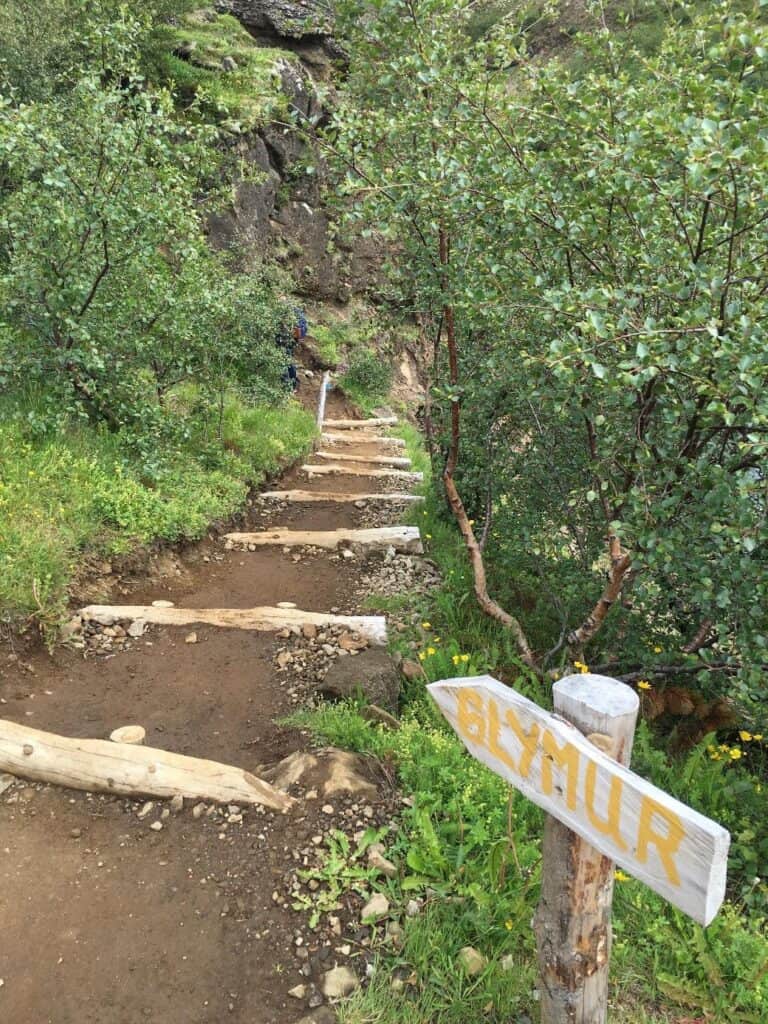In the first part of our Blog about Iceland’s secret places we introduced some tips for excursions and hikes that are usually not as crowded. And there are of course more, some are accessible by car, others a little hiking is required and will lead you through beautiful landscapes and breathtaking nature.
Here we go…
The Mossy Canyon
Not far beside the Ring Road is Fjaðrárgljúfur (some practice in pronunciation is needed here) Canyon. It might be one of the most beautiful canyons in Iceland, only 8 km away from the little village Kirkjubæjarklaustur on the south coast. F-Road no. 206 leads straight to the lower parking lot, from where you can start the hike to the gorge and enjoy the view of an amazing landscape. Some parts of the gorge are up to 100 m deep and it has a total length of approx. 2 km. It was created when the melting water from the glaciers made its way through the rocks.

Bathing with a view
Much further north in a small town named Hofsós on the Tröllaskagi peninsula, is one of Iceland´s most beautiful swimming pools. It is directly located on a mountain slope and offers a stunning view all over the sea and the mountains in the fjord. With a temperature of the water of approx. 30° Celsius it is totally cozy, even in bad weather. Right next to the pool you can walk a small path down to the beach. Don’t miss it, there is a beautiful wall from basalt stones below. About 4 km away from Hofsós pool, via Road no. 76, is one of Iceland´s few preserved turf churches. Viðimýrarkirkja is no longer open to visitors, due to protection and preservation, but a walk through the fabulous location is definitely worth it.

The Whale fjord
Everybody who likes to hike high up, can “climb” up to Iceland´s second highest waterfall “Glymur” which is 198 m high and situated between Reykjavík and Borgarnes in “Hvalfjörður” (=Whale fjord). Since 1998 the main traffic between the two cities goes through “Hvalfjorðurgöng”, the tunnel that goes under the sea and reduces the driving time for about 90 km or around 1 hour. Today just very few people drive along this charming fjord. The story of the waterfall and the origin of its name tells a story about an elf woman who was turning her human husband into a whale, because he refused to recognize their child. The whale had a read head, because the man was wearing a red cap at the time of his transformation. All people from the fjord were afraid of the raging whale “Rauðhöfði”, which swam one day up the river to the waterfall and got stuck in the narrowness. After he shacked himself and therefore one of the largest earthquakes around this area caused. Glymur means something like trembling/shaking earth. The hike takes about 2-3 hours and leads you over a tree trunk, which works as a bridge over the river and the along moss-covered cliffs up to the waterfall.

The eye of the world
Kerið is an approximately 3,000-year-old (actually young, since it is only half the age of most of the other known volcanoes in Iceland) crater lake in the volcanic field in Grímsnes, on the road between Selfoss to Haukadalur. Scientists thought earlier, that the crater was formed by a volcanic eruption, but today most volcano experts suspect that it was once a cone-shaped volcano that later erupted and exhausted its own magma reserve, causing the foundation to collapse and built today´s formation. Over the centuries the crater then filled up with water and the lake is now between 7 and 14 meters deep – depending on the season and the rainfalls. With the red slopes and aquamarine water, it looks from above almost like an eye, depending how the weather and especially the sky looks like. If you want to walk around the crater, you have to pay a small fee (ca. 3-4€/400ISK).

DC3
Around 16,000 DC-3 airplanes were built and used by almost all airlines worldwide for many years. In Germany also known as “Rosinenbomber” (Raisin bomber), which flew the „Luftbrücke” to Berlin. In 1973 was an emergency landing on the black lava beach of Sólheimarsandur with US Navy´s Dakota aircraft Douglas C-117, Super DC3. Fortunately, all crew members survived this crash and were able to climb out of the wreck. Important parts of the aircraft were dismantled and taken away by the US Army, but the entire hull was never picked up and is still on the beach, approx. 4 km from the Ring road. The road to drive to the wreck is no longer permitted, but a walk from the parking lot right next to the road and through the black desert is definitely worth it. And you may be lucky and reach the wreck all alone and take your photo all by yourself.

Land of trolls and elves
Dimmuborgir means something like “dark cities or dark castles”. Further east of Lake Myvatn in north Iceland there´s a Lava field called Dimmuborgir, amid of a volcanically active area in the Krafla volcanic system. It is a park with bizarrely shaped rock formations made of lava, reminiscent of ruins of castles with dilapidated towers, bridges, gates, sculptures, and an enchanted area that might be a place of trolls and elves, if we believe the Icelandic saga. In earlier times there used to be a large lake which was flooded with lava during an eruption. The evaporation of water created cavities and today´s mystical forms in the lava. During a walk through the created paths and by using a little bit your phantasy, you can see trolls and elves in all kinds of positions. Dimmuborgir is also very interesting in December, because then the Yule Lads, the 13 Icelandic Santa Clauses, are there.

Europe´s strongest hot spring
The hot spring Deildatungahver near Reykholt in Borgarjfjörður is really a tongue twister. Around 180 liters of hot water shoot up from the ground every second and with a temperature of up to 100° Celsius. In addition to the farms around, the spring also supplies the towns of Borgarnes and Akranes with hot water. It is pumped through the landscape via a 64 km long pipeline and has still a temperature of around 80° Celsius in Akranes. In the neighborhood, the energy is used to grow tomatoes, cucumbers, lettuce and strawberries in greenhouses. Since 2018 you can relax in Krauma baths, which are located right next to the natural spring. In one of 5 warm pools (each with a different temperature), an ice pot or in the relaxation room with a little fireplace, you can enjoy yourself with a glass of wine or beer. The hot water in the pools comes directly from Deildatungahver (and can therefore contain natural algae’s or moss) is cooled with cold water from the ex-glacier OK (since 2014 OK is no longer registered as a glacier, after a significantly melting in size). Some people say that in Krauma baths a fresh tapped beer tastes much better than anywhere else.

Skál!

